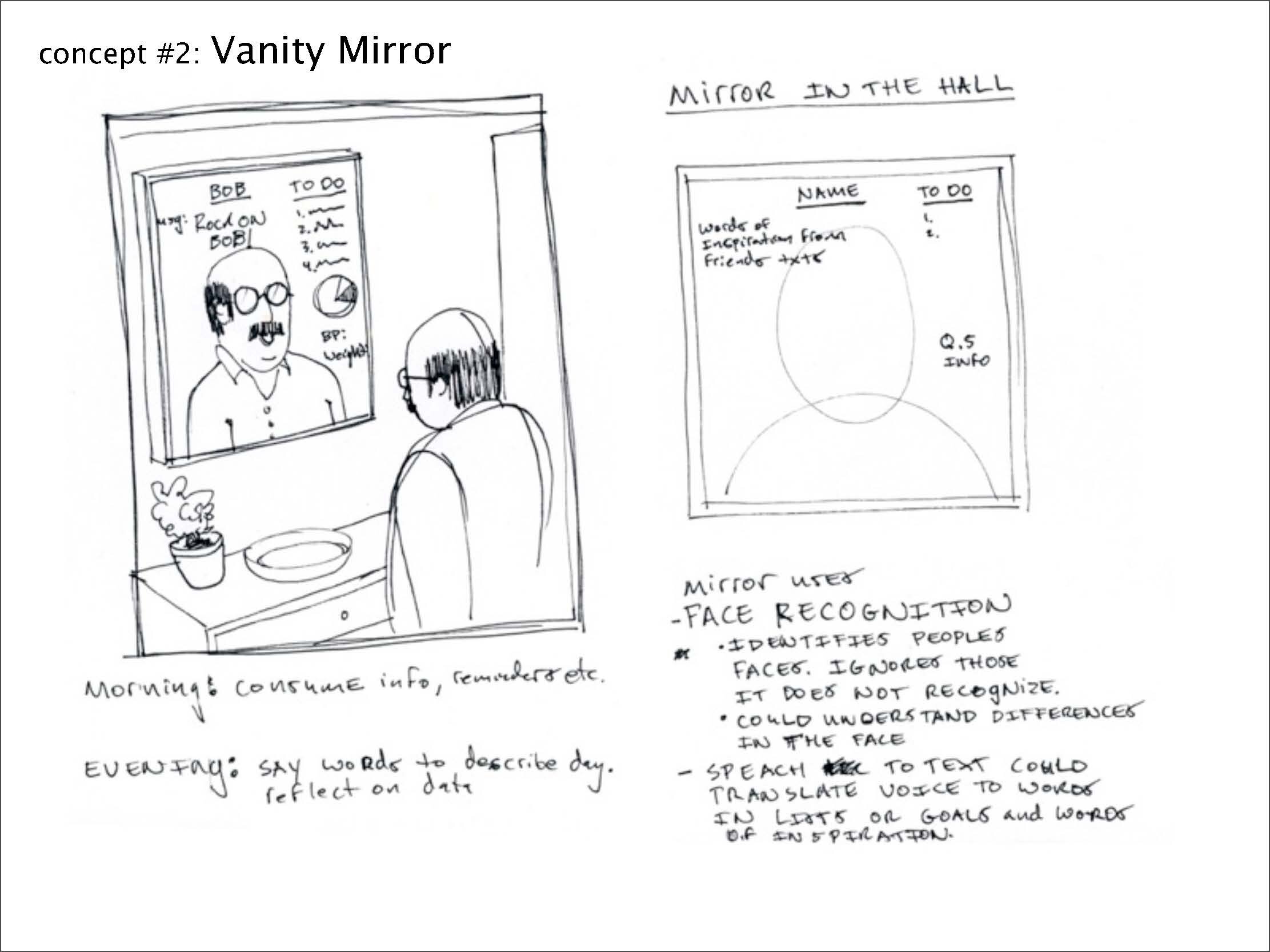
The Qualified Self
Health and wellbeing technologies for older people
Project context
This project was a collaboration between The Helen Hamlyn Centre for Design and Panasonic, to develop new conceptual frameworks for technology services to support the health and wellbeing of older people.
The subject was especially important given the ageing demographic in Japan and elsewhere in the developed world. When a person ages, they have a different relationship with their bodies – managing health and wellbeing becomes more complex – and they have a different relationship with technology too.
Research evidence base
The study has conducted in-depth ethnographic research with a user group of 24 people, aged 55-75, individually and in groups, in the home and outside, to learn about their lifestyles, to understand the social, physical and psychological factors that shape their health and wellbeing, and to probe attitudes to technology.
What did these insights tell us about the design direction?
The health and wellbeing technology solutions for this cohort of tech-aware 55-75 year olds should be different from those aimed at younger age groups.
The older cohort are ‘digital immigrants’ who have learnt about technology and been forced to adapt to it – they are different from ‘digital natives’ who have grown up with it naturally. Most current healthcare solutions are aimed at ‘digital natives’, as personified by the Quantified Self (QS) movement. This is all about measuring sleep patterns, body fat, heart rate, steps taken, calories eaten and so on, using sensors and input devices so that the individual achieves self-knowledge through numerical data. The QS movement has been enthusiastically adopted by digital natives.
Panasonic Mirror (Early-stage concept)
Is a tech-enabled ‘mirror’ that sits at the entrance to your home
Uses facial recognition to give you personalised health and wellbeing messages
Is programmed to remind you to take your medication and not forget your wallet
Is reflective and reassuring
Contextualises your day
Advocating a different approach for older people
Our qualitative research has told us that digital immigrants have different needs and life experiences.
So our approach was to go beyond the Quantified Self to define something we have called the Qualified Self (QLS), so that the individual achieves self-knowledge through human insights. This was the ‘big idea’ for Panasonic to build a conceptual framework to design for this market.
The Qualified Self is not the opposite of the Quantified Self, nor a replacement for it. QLS is an extension – an important refinement that would provide Panasonic with a competitive edge:
QS gives people a better grasp of their performance through the reading of a range of empirical health data
QLS has the potential to give a better sense of self, through the reading of a range of emotional and aspiration aspects of health and wellbeing
THE QUALIFIED SELF CONCEPT 1
Life Notes
Life-Notes addresses the routines of older people by merging the physical and digital.
A wifi connected Post-it note printer that plugs directly into the wall prints automated todo lists, txt messages, directions, appointments, medications and other information that supports a persons life.
A simple online calendar/ goal list mixes with information picked up by GPS and other sensors to one’s goals, needs, communications, and bio feedback to create a highly dynamic system to support an older persons lifestyle.
Notes are printed on colourful paper that serves as a visual cue and can be placed around the home or in a book or diary. Once their usefulness is done, they are simply crumpled up and tossed out.
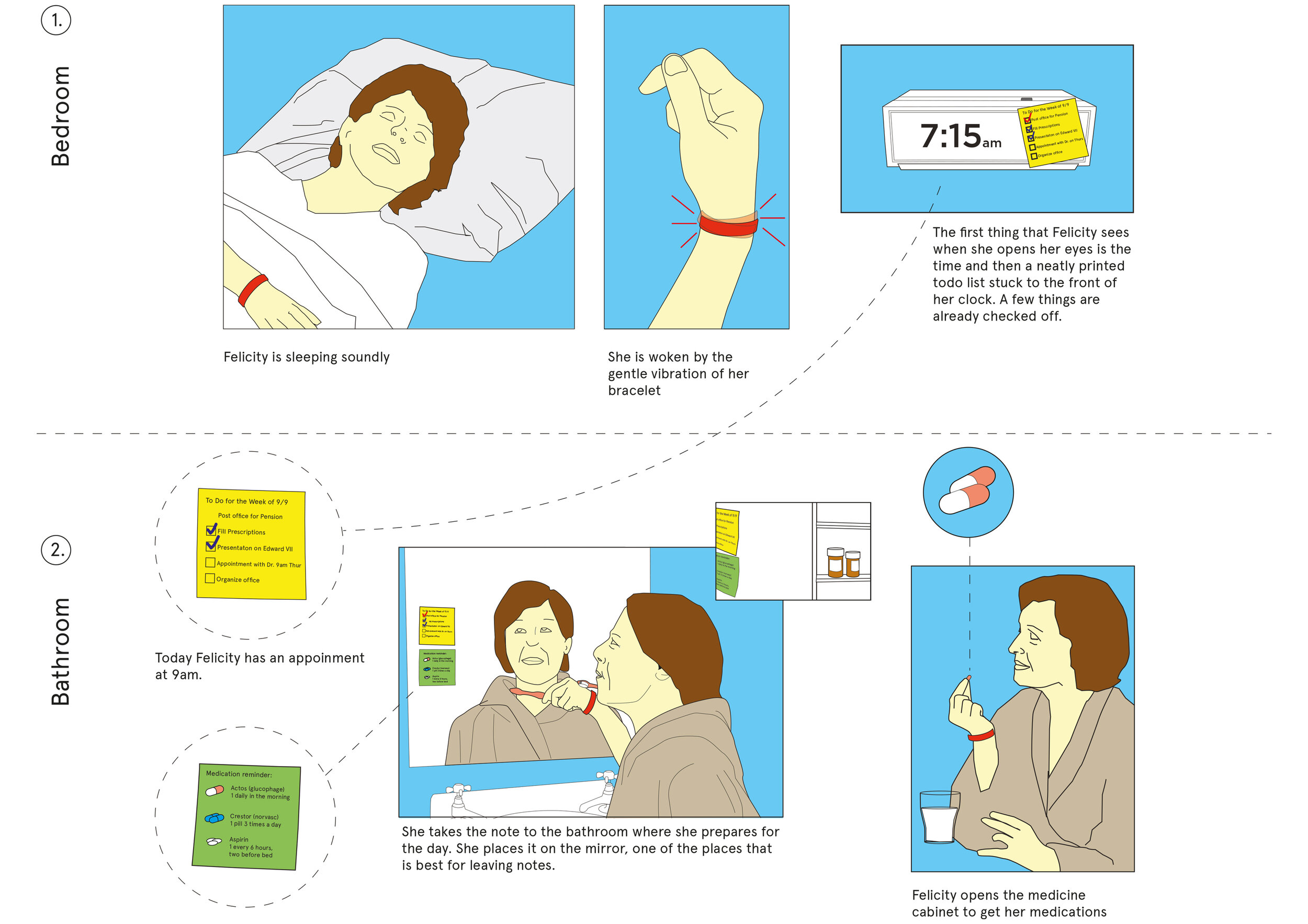
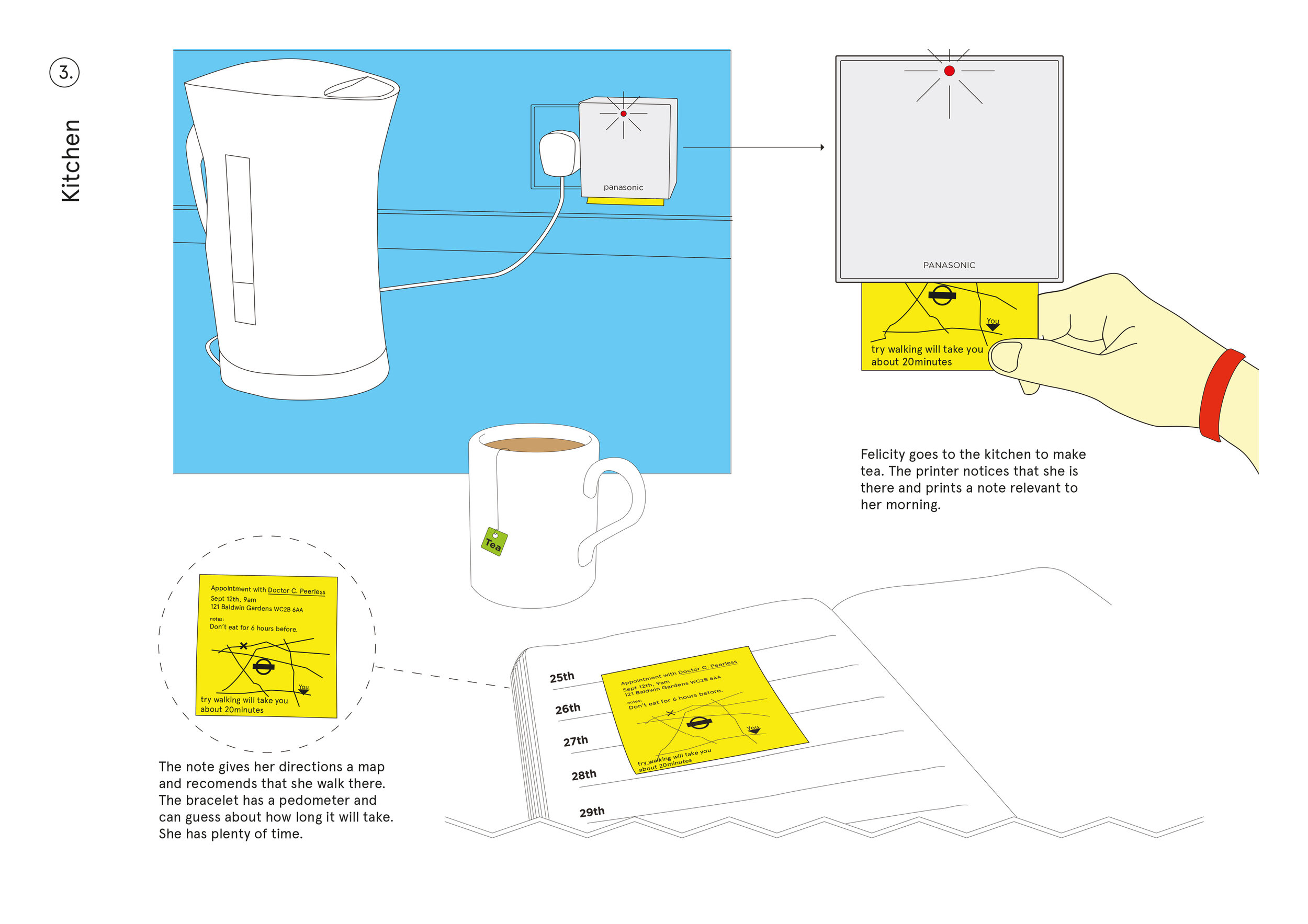
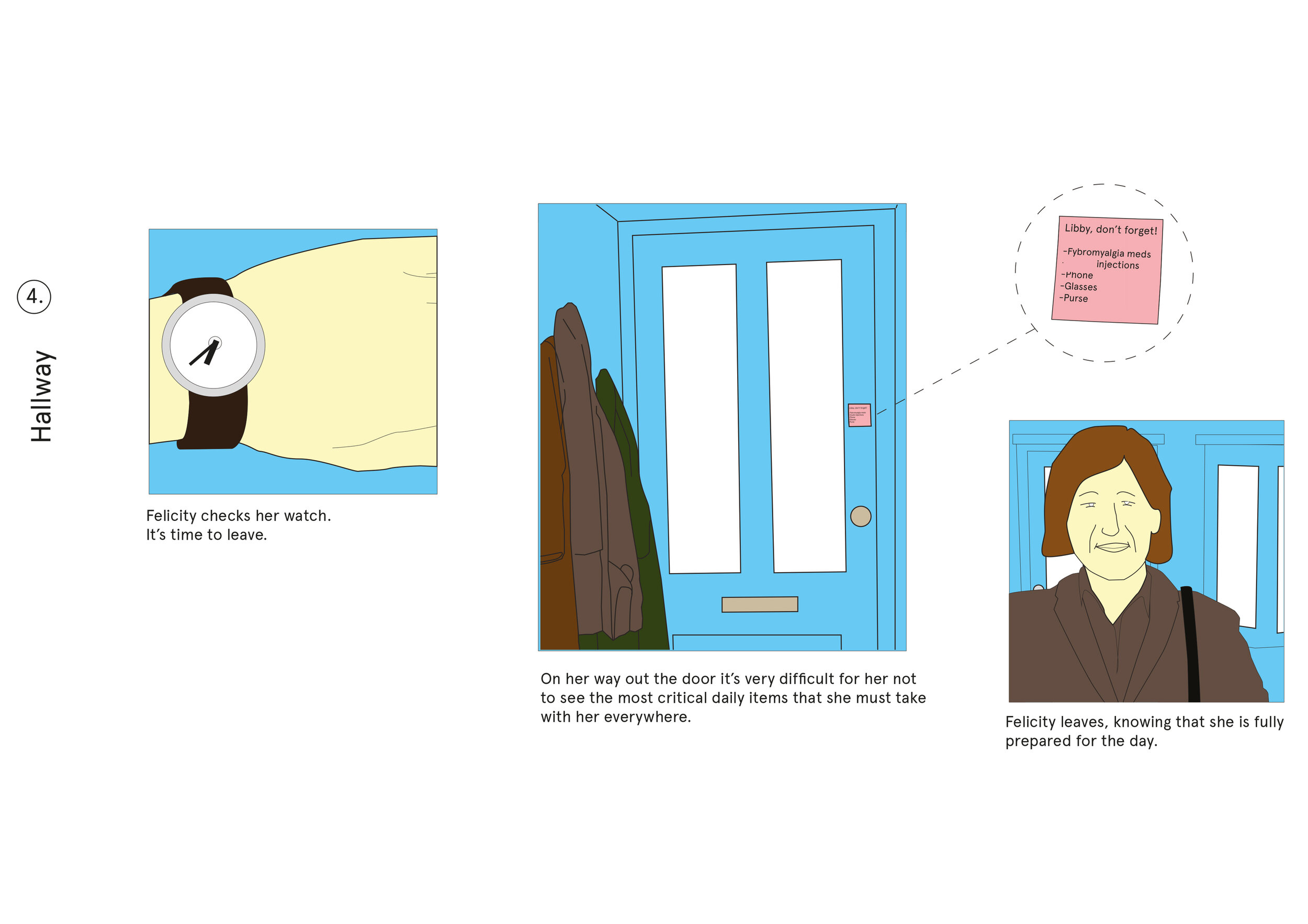
Life Notes was developed based on the following research learnings
Definitions of health & wellbeing change overtime: For many it’s not about pain, or the body, but a sense of independence and control
People between 55-75 are often more comfortable assimilating information from paper than digital interfaces
As we age, short term memory naturally degrades and people begin to use more visual tools and que’s to remember, a way supporting memory
People want the connected and dynamic advantages of digital in more physical, portable form that can be written on
Qualified Self (QLS) uses technology to take a more holistic and personalised approach to managing your health
Older people need the right information, at the right time, in the right place and in the right format.
The hall mirror is one manifestation of that. We learned, that this cohort is far less interested in wiring themselves up to collect lots of data and graphs. They are also actively worried about data ownership and more interested in getting a better sense of self in an emotional and aspirational way.
The QLS platform is a step beyond numerical data display and has the potential to give Panasonic valuable design criteria for developing future health and wellbeing services for the over-55s.
THE QUALIFIED SELF: CONCEPT 2
Tiny Questions
Tiny Questions, understands your language, your questions and your statements and therefore understands you.
It is able to understand your voice and translates your natural questions into search queries for a highly accurate and constantly updated database of established health related information.
Tiny questions asks you personal questions based on the approach of the GP. It always remembers you and gets smarter with every question, statement or other input such as a bio feedback, digitised health records or a genomics test.
Through the efficiency of natural language and speech recognition, meaningful interactions can happen within a few seconds, or an extended conversation can ensue while reading the morning paper.
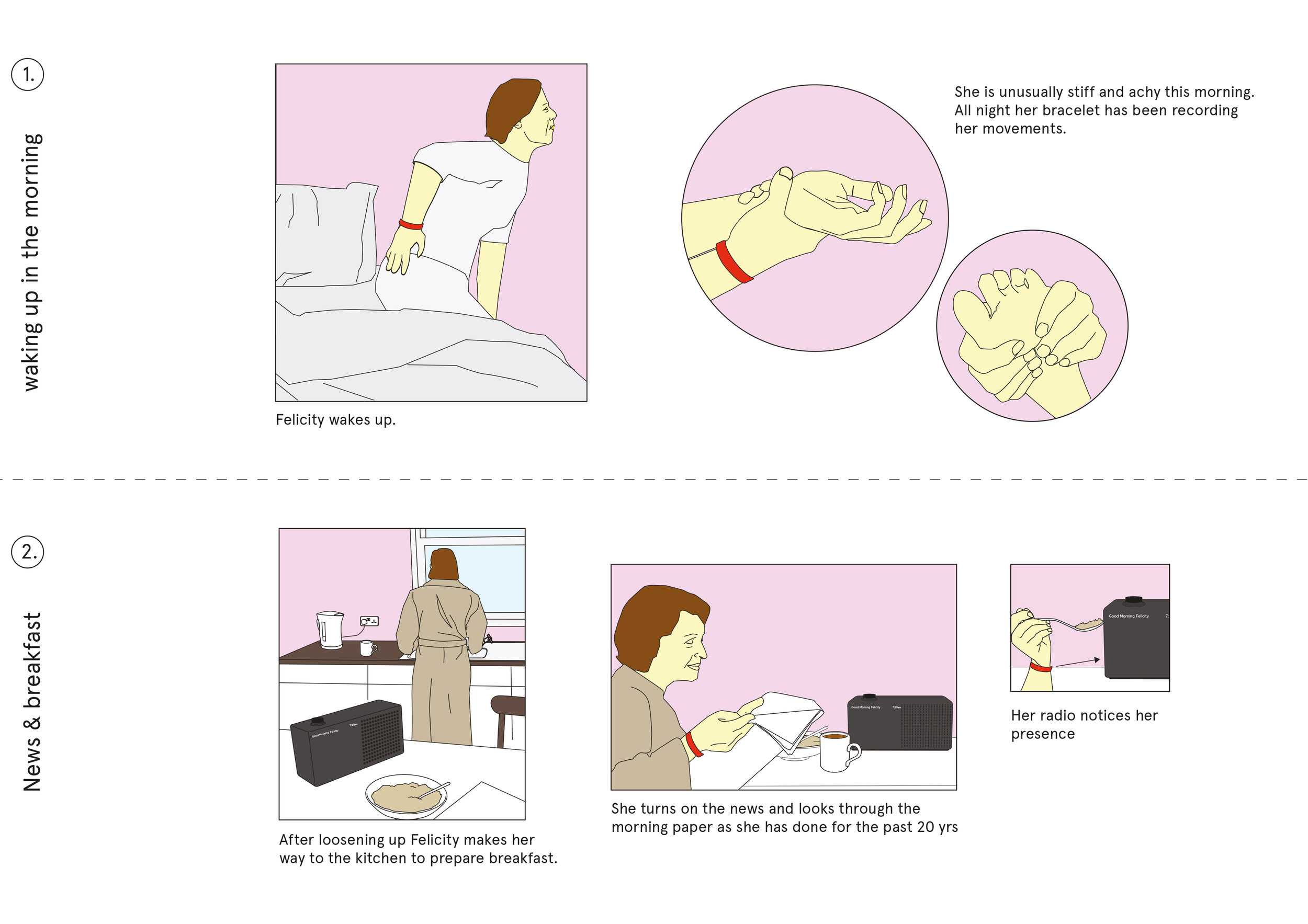
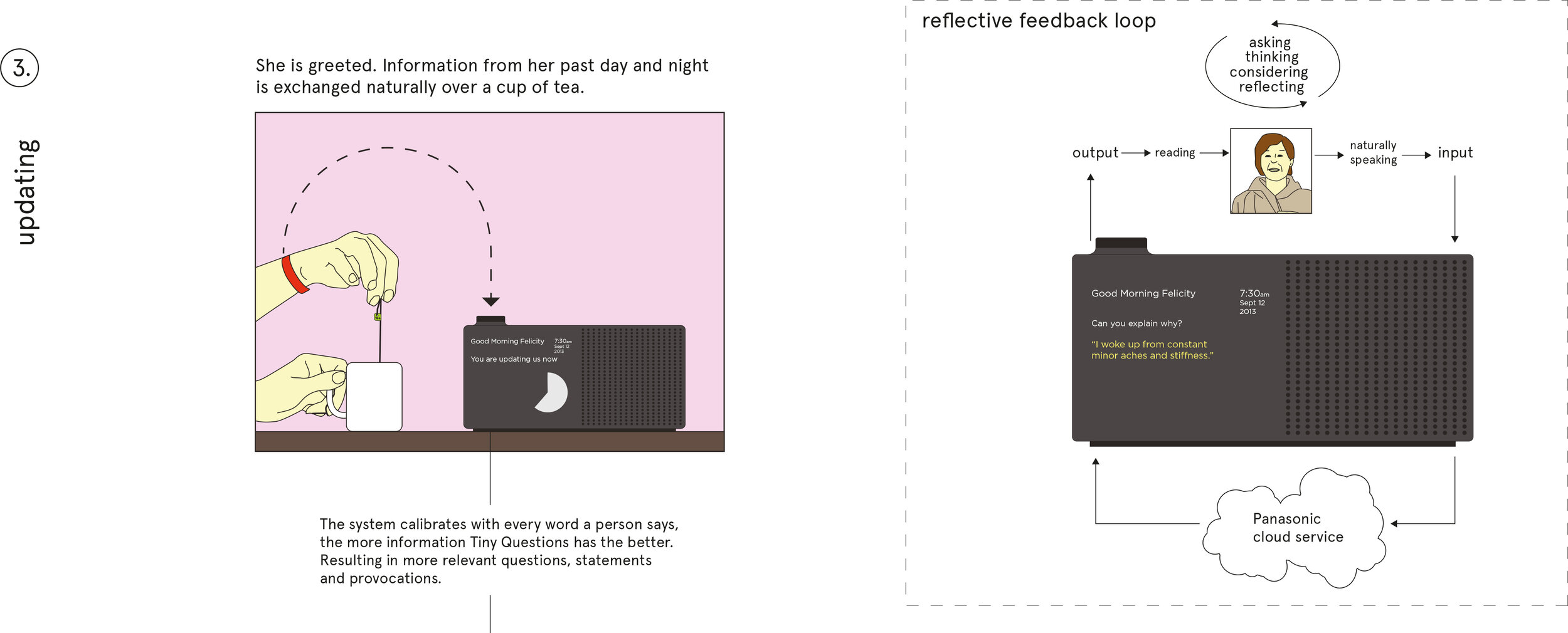
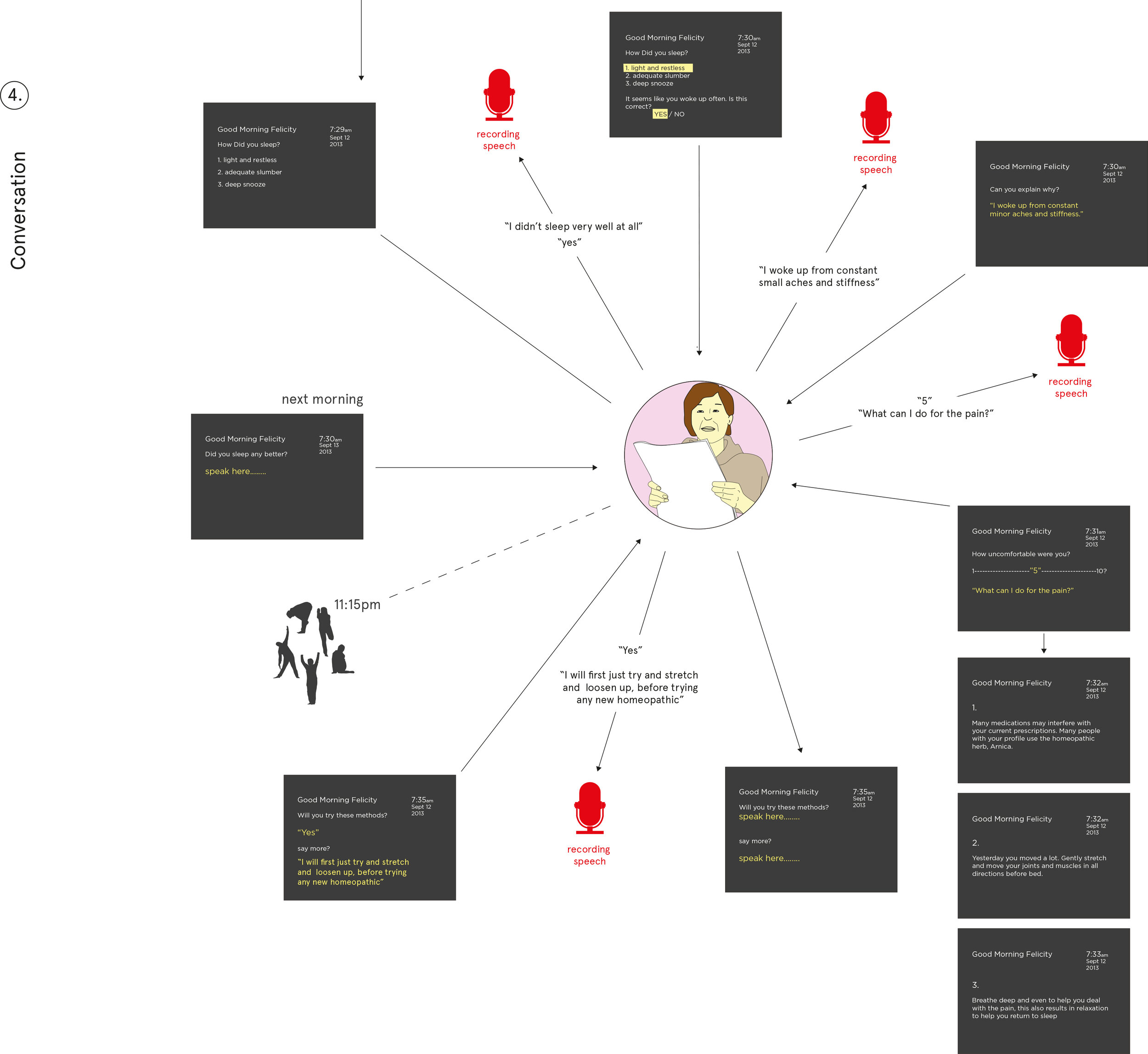
Tiny Questions was developed based on the following research learnings
The average GP appointment is between 8 and 10 minutes long, often with new GP’s for each visit
People have trouble expressing their problems, fears and aspirations in such a short period of time
Many older people do not “speak the language of the internet” and find it difficult to search for what they need
The noise of the internet leads to a paradox of choice, due to the expansive and in-personal options for personal health

